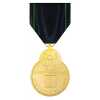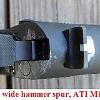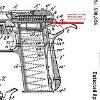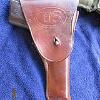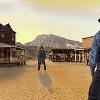The 1911 was designed to be carried half-cocked? Was that design by John Browning's initiative or at the behest of the US Army?
According to Goddard, John Browning starting working with Colt on semi automatic pistols in 1895,
https://www.browning.com/support/historic-timeline.html bringing forth a protype that eventually became the Browning model of 1900.
http://www.imfdb.org/wiki/File:FNM1900.jpg In 1896 Browning and Colt signed a licensing agreement for the inventor’s pistols. Browning was working with FN and Colt, the article “The FN Browning Model 1903”
https://www.americanrifleman.org/articles/2011/7/21/the-fn-browning-model-1903/ described Browning offering both Colt and FN his automatic pistol designs, and both manufacturer’s selected different features. FN sold theirs as the FN Browning 1903 and Colt sold theirs at the Colt Model 1903. You can read of troop trials in Europe with the FN Model 1903, and Sweden purchased 10,000 as an official sidearm. So we do know that Browning was designing semi pistols specifically for military and civilian use early in the 20th century.
A great picture of the Colt M1903 is at IMFdb

This is not a rhetorical question, just how did John Browning holster “carry” the M1903? Did he “holster carry” it chamber empty?, round in chamber but cocked? round in chamber hammer at half cock? or hammer down on a round in the chamber?. What do you think?
Based on the text of Patent 580 924
I have sought also to provide improved means to prevent the release of the hammer until the breech is fully closed and all parts are locked in proper position for the discharge of a cartridge, improved means to prevent the release of the hammer after each single discharge until the trigger has been released and is again operated, and improved means whereby the breech block or bolt carrier is automatically locked in its closed position, so as to prevent the possibility of its movement, by bringing the hammer to the safety or halfcock position and whereby the breech block or bolt carrier is automatically unlocked by bringing the hammer to the full-cock position or by fully lowering the hammer……………………
The sear m and safety-piece 0 also serve to automatically lock the breech belt in the frame when the hammer is brought to halfcock and to automatically unlock the same when the hammer is either lowered or raised to full-cock. For this purpose the safety piece has at its lower end a shoulder 0 (see Figs. 4, 5, 6, 7, and 10,) and the sear m has a cross-bar m below its slot m which forms a shoulder to cooperate with the shoulder 0 of the safety-picce 0.
As is well understood, the point or upper end of the sear m approaches the center upon which the hammer is pivoted more nearly when the hammer is at half-cock than when it is down or at full-cock, wherefore the crossbar or shoulder m when the hammer is at half-cock, (see Fig. 7,) is thrown forward under the shoulder o of the safety-piece o and prevents the latter from moving downward.
18. In a firearm, the combination with a frame, a hammer having a half-cock notch and a full-cock notch, a scar engaging said. notches and having a shoulder, a breech block and bolt carrier sliding on said frame and having a recess, and a safety-piece mounted in said frame and entering said recesses when the hammer is at half-cock and having a shoulder which engages said shoulder of said sear, whereby when said hammer is at half-cock said safety-piece is held by said sear in engagement with said breech block or bolt carrier.
Read this enough times and you might believe John Browning designed the pistol to be "carried" on the half cock.
This is a great resource for the patents that lead to the Colt 1911
.
Sam Liker's Colt Autos.com
http://www.coltautos.com/default.asp
I am going to claim that Browning intended the 1903 pistol to be hand and holster “carried” at half cock. The half cock is a safety, and when the hammer is at half cock, interestingly enough, the “safety piece” locks the slide in place.

This feature is in the 1911 pistol. You can over ride it, but place a series 70 pistol on the half cock, and the slide is fixed in place.
These patents were serious intellectual property. Here is a lawsuit, an inventor claimed Browning infringed his patent!
Circuit Coruts of Appeals Reports, Vol 111, 1912, page 405, Colt’s Patent Firearms MFG Co et al. v. New York Sporting Goods Co,
https://books.google.com/books?id=VtYrAQAAMAAJ&pg=PA405&lpg=PA405&dq=patent+580924&source=bl&ots=amE-ZFwoVm&sig=ACfU3U16eTfQbJcgp7e3dRedAS1P9wkhqA&hl=en&sa=X&ved=2ahUKEwiI0qGB6aDqAhVxkeAKHebsAQ8Q6AEwBHoECAwQAQ#v=onepage&q=patent 580924&f=false
John Browning used half cock safeties on his lever actions, shotguns, and pistols.
1897 Winchester pump half cock safety
https://jakesgunreviews.weebly.com/winchester-model-1897.html
Marlin 1898 Shotgun half cock, and dangerous action
Working with Marlin Pump Shotguns Rusty Marlin SASS #33284
http://marauder.homestead.com/files/Marlin98s.htm#_Toc5766673
There were other single action auto pistols on the market, and the 1905 Mannlicher had a positive hammer blocking safety. This pistol could be safely carried with a round in the chamber, hammer down.
So if the US Army during WWI carried it hammer-down on a full chamber, how did they fire it? Cocking it with the thumb and then firing?
Yes that is how they did it. Remember they are only a decade from the Colt single action Army revolver, and most of the decision makers would have carried Colt SAA's and Colt blackpowder pistols, and some would have carried them into battle.
The original 1911 were positively easy to thumb cock. The grip safety was not in the way, and the early hammers had wide spurs.

Today's "combat 1911's" with their beavertail grip safeties are very hard to thumb cock. That is why I stopped buying the things, as I consider cocked and locked less safe than hammer down. Extended safeties are always going in the wrong direction. They are on, when you want the off, and they are off, when you want them on. Combat classes teach students to ride their safety because extended safeties are easy to accidentally bump on safe, when the student wants their gun to go bang.
And rather than engaging the safety, the decocked it with their thumb or other hand?
Yes, given the model 1910 which passed the troop trials for reliability, did not have an external safety, that would have been the mode. Except the Cavalry did not want that, they wanted to keep their revolvers, and having to make an auto pistol safe with two hands was an absolute no go for the Cavalry. If MG Crozier had not gone to Colt and told them to figure out a way to make the pistol safe with one hand, the 1910 would have become some historic curiosity.
Links and pictures from Sam Laker’s ColtAutos.com
http://www.coltautos.com/default.asp
This is an exceedingly rare pistol, Sam has pictures of serial number 2, and it is not retrofitted for the thumb safety, and this one, serial number 5, is in the original 1910 troop trails configuration.

serial number 6

Notice the Navy never allowed cocked and locked, or even a round in the chamber. From the earliest Navy Blue Jacket Manual I have found, about 1918, the Navy mode is magazine in the gun, no round in chamber, pistol in flap holster. An accidental discharge inside a steel ship, filled with people and munitions, is a very serious matter. Officers might get a 1911, but they probably did not get magazines or ammunition.
This happens to be a letter to the editor in the May/June 2020 Handgunner
Military Gun Nonsense
The recent shooting at NAS Pensacola reminded me the navy has long been politically correct regarding handguns. During the Korean police action I served in the Orient as a line officer on board an attack transport. When in port the officer of the deck was required to carry an unloaded sidearm. We were not even permitted to possess a loaded magazine on pour person. I tried to object to this state of affairs, but you can well imagine how much weight the opinion of an ensign might carry. It was explained to me there are three ways of doing something-the right way, the wrong way, and the navy way. It was further explained the pistol was not to considered a weapon, but a symbol of my authority. Personally, I regarded it more as a bullseye on my back.
After WW1, after decades of peacetime operations, the Royal Navy was absolutely loath to have any real bullets in anything. In the book
To War in a Stringbag, https://www.amazon.com/War-Stringbag-Charles-Lamb/dp/0553136542 the British were loath to arm their combat aircraft with bullets. The author, Charles Lamb
https://en.wikipedia.org/wiki/Charles_Lamb_(Royal_Navy_officer), was on the aircraft carrier HMS Courageous which left port 3 Sept 1939, and even though the British had declared war on Germany on the same day, the armorers refused to load the machine guns on his aircraft with bullets! Peacetime policies still were in effect and it was Navy policy to not arm the weapon systems based on the concern that pilots might accidentally activate their weapons and shoot something. This strange situation self corrected when a German U Boat sank the HMS Courageous on 17 Sept, and given the heavy loss of life, it is probable the Master Armorer went down with the ship.
So I'm also curious when did cocked-and-locked come into fashion?
As best as I can tell, post WW2. Bill Jordan in his book, No Second Place Winner mocks those who claim the 1911 was designed to be carried cocked and locked. Bill Jordan was USMC during WW2 and the Korean War, before he became Border Patrol.
This is a post WW2 holster for the 1911, and the safety strap goes over the grip safety.

do you think the WW2 generation would have carried 1911's cocked and locked, with the grip safety deactivated?
Seventy years later, it is hard to understand how enamored the shooting community was with the idea that the fastest man always wins.

You can watch tens of thousands of hours of old Western shows and movies, and the pre WW2 B grade movies which are not on the television, are all full of the premise that the fastest man always won his gunfights. There are movies with the title, "The fastest Gun in the West". Walk and draw was a big sport in the 1950's, guys dressed up as Cowboy's and the fastest draw won. Combat was understood to follow a set of rules. Firstly, there had to be the grudge, for example:
"you rattlesnake, you raped my Dog!" The combatants would step into the middle of the street, nicely silhouetted without blocking structures so everyone could see the event. And then there would be the wry banter "
You are just a yellow belly stuffed monkey!'. Typically followed by a pause, wherein each fighter would fill his hand, and the fastest one would of course, with one shot, eliminate his opponent. It worked every time. The fastest man always won in a mano e mono contest. Back shooting was not allowed, real men drew their guns facing each other.
Combat games of the period were based around this premise, and of the guns out there, the 1911 was the fastest to draw, to shoot, to reload if cocked and locked and not in a flap holster. In time Cult Cocked and Locked developed into a Product Cult around the 1911. And because they hungered like pigs for that delightful single action trigger, to justify their carry mode, Cult Cocked and Locked created a self serving false history.
It is not as strong as it used to be because high capacity pistols are what the market want now. And the vast majority of Tupperware pistols are striker fired. I do believe that is the reason we are seeing new versions of the FN HIghpower. The FN Highpower is a high capacity 9mm and it is a single action pistol. You see how it is being re engineered with extended safeties and other features, so it appeals to those who want a good trigger and are willing to carry a pistol cocked and locked. I have not found any original manuals, but I am confident the military Highpowers were carried round in the chamber, hammer down. And I am sure, history will be re written to justify carrying Highpowers cocked and locked.
The military flap holster is an absolute failure in terms of quick draw games.


You have to unbutton it, lift the flap, and pull the thing out. That is why no one used the military flap holster in quick draw games. I do think the military issued a good military holster. It protected the pistol from the elements. There is little to no need to play quick draw in a war. It is very hard to sneak up on enemy positions when the guys on the other side are nervous as hell and shoot at sounds. And, there are one heck of a lot of eyeballs watching, waiting to raise an alarm. Military units post sentries whose job is to warn the unit of bad guys coming.
The Cavalry had very formal commands when initiating attacks. There was draw saber or draw pistol, and then charge! Cavalry was expected to know when combat was to start, and to have their weapons in their hands when fighting started. Of course, units got bushwhacked, and the bullets that killed those who were not ready, gave the others time to pull out their weapons and fight, or run away. You do know, the military expects causalities? If some have to die to save the others, then so be it. When 2000 to 5000 men are dying per week in a war, quick draw games with pistols are more or less irrelevant to the outcome. It gets even worse when the life expectancy of a solider is less than 24 hours, which at times, is what occurred during Stalingrad. Under those sort of conditions, skill with a weapon has virtually no affect on the duration of a Soldier's life. Modern industrial war is a meat grinder, which only stops when the meat supply runs out.

